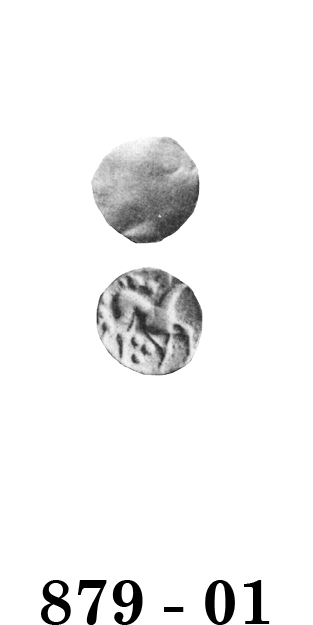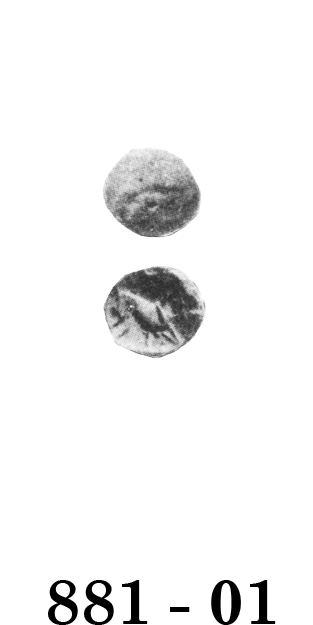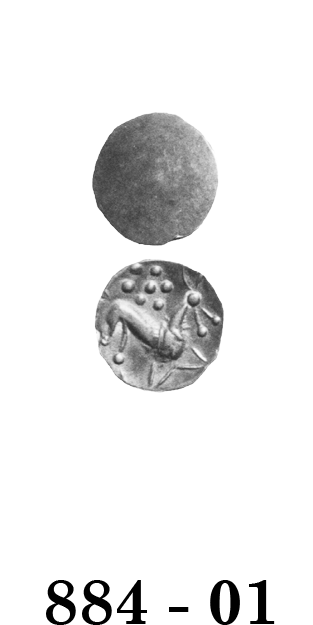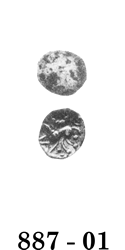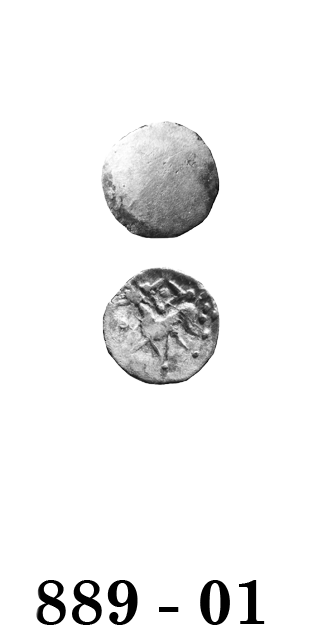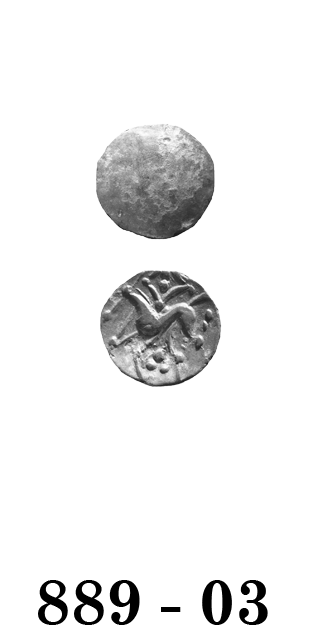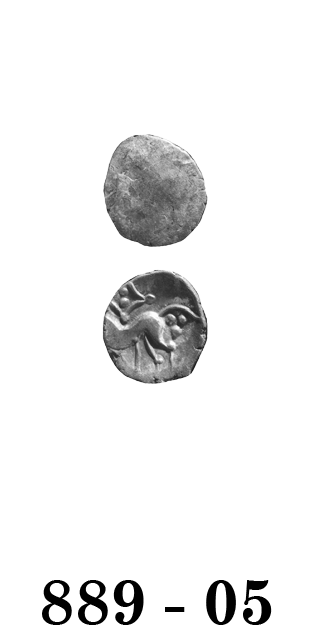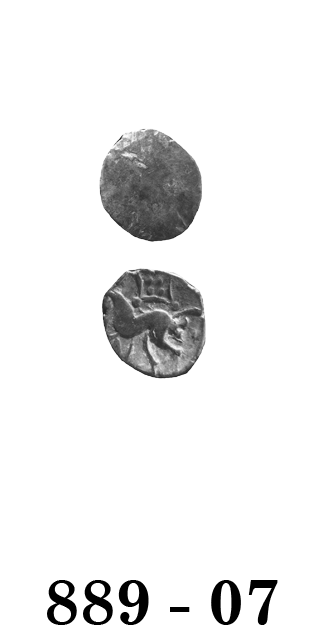
Celtic Coinage of Britain
third edition
Click on coin to see hidden information
Uninscribed Silver Coins of the Corieltauvi
The first silver coins carry an obverse type copied directly from the Roman Republican denarii of C. f. Hosidius Geta. The Roman prototypes are dated to about 60 B.C., and thus the introduction of silver coinage in Corieltauvian territory coincides roughly with the gold staters of 55 B.C. The HOSIDIUS TYPE is the silver counterpart of the North East Coast staters.
The introduction of silver coins was probably the result of the economic stresses of the Gallic War and the increased contact between Rome and Britain. Roman coins, primarily silver denarii, would have circulated in increasing numbers during this period. The Celtic tribes in closest contact with Rome would have been induced to strike their own versions as a result. The Corieltauvi, rather than being isolated, are seen to be participating in the mainstream of the socioeconomic changes sweeping Britain in this period.
About 45 B.C., the HOSIDIUS TYPE is replaced by the SOUTH FERRIBY TYPE, coincidentally with the change in the gold coinage. Although there is considerable similarity between the two types, the SOUTH FERRIBY exhibits more stylization of the boar and horse. This type continues until the inception of the dynastic issues, about 10 B.C.
Kite Type Silver Coins
Ian Leins' 2011 analysis of the Hallaton Hoard has provided much needed detail about the Kite Type silver. A Silver Unit has now been identified (888 – 01), and the different die-varieties of the fractional coins are discussed in detail.
Readers wishing to learn more about this coinage should consult the original excavation report (Leins, 2011a)
Domino Type Silver Coins
Hobbs' 1996 catalogue and Ian Leins' 2011 analysis of the Hallaton Hoard have identified a Silver Unit corresponding to the Domino Type Stater (829-01). The finds in the Hallaton Hoard give the needed confidence to believe the coins genuine ancient objects.
A corresponding Silver Fractional Unit has not yet been identified.
Readers wishing to learn more about the find of this new coin should consult the original Hallaton excavation report (Leins, 2011a)
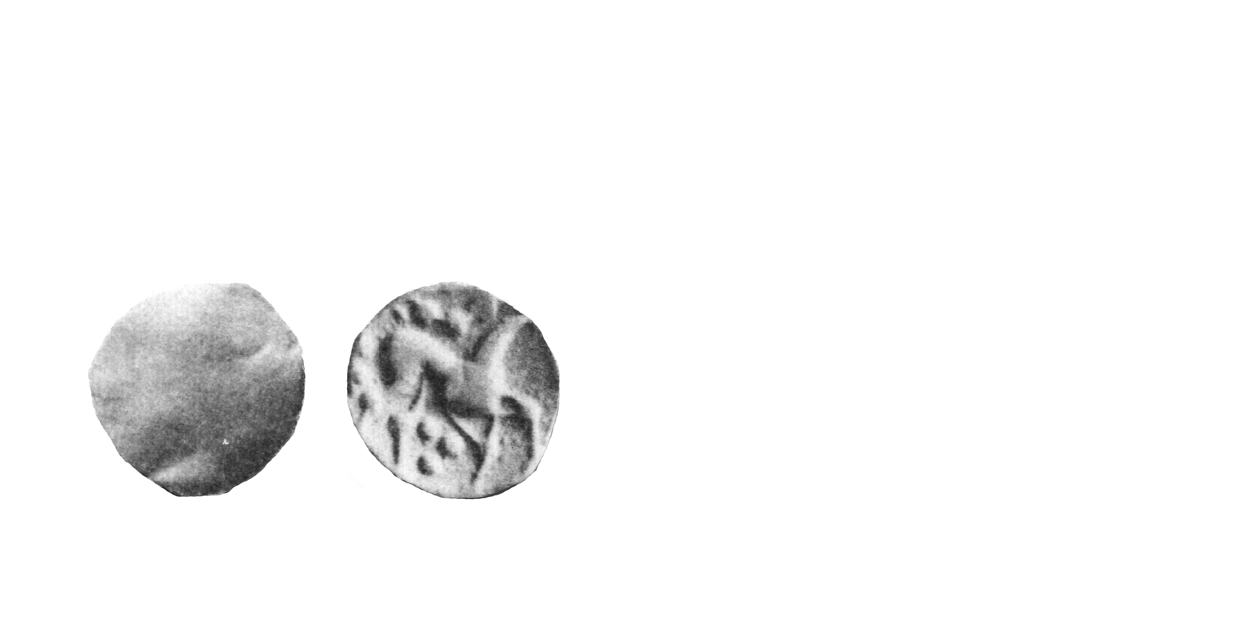
879 - 01 South Ferriby Type
ca. 45-10 B.C. Common
Silver Fractional Unit 0.4-0.6 gms. 11 mm
Earliest Record: Mack, 1953 (South Ferriby Hoards 1905-1908)
OBV: Almost plain
Identifying points:
1) vestiges of boar may be visible
REV: Celticized horse right
Identifying points:
1) horse more stylized than on Hosidius type
2) large ring of pellets above horse, possibly with large central pellet
3) one or more pellets below horse's tail
4) upper portion of horse's front legs comprised of two lines
5) three pellets below horse
CLASSIFICATION: Corieltauvian D
NOTES:
- Pellets below horse's tail may be a privy mark denoting date or issue
- Obverse die used until almost completely obliterated
- Fractional denomination, possibly an Silver Half Unit
- Celtic Coin Index records now show this to be a common type
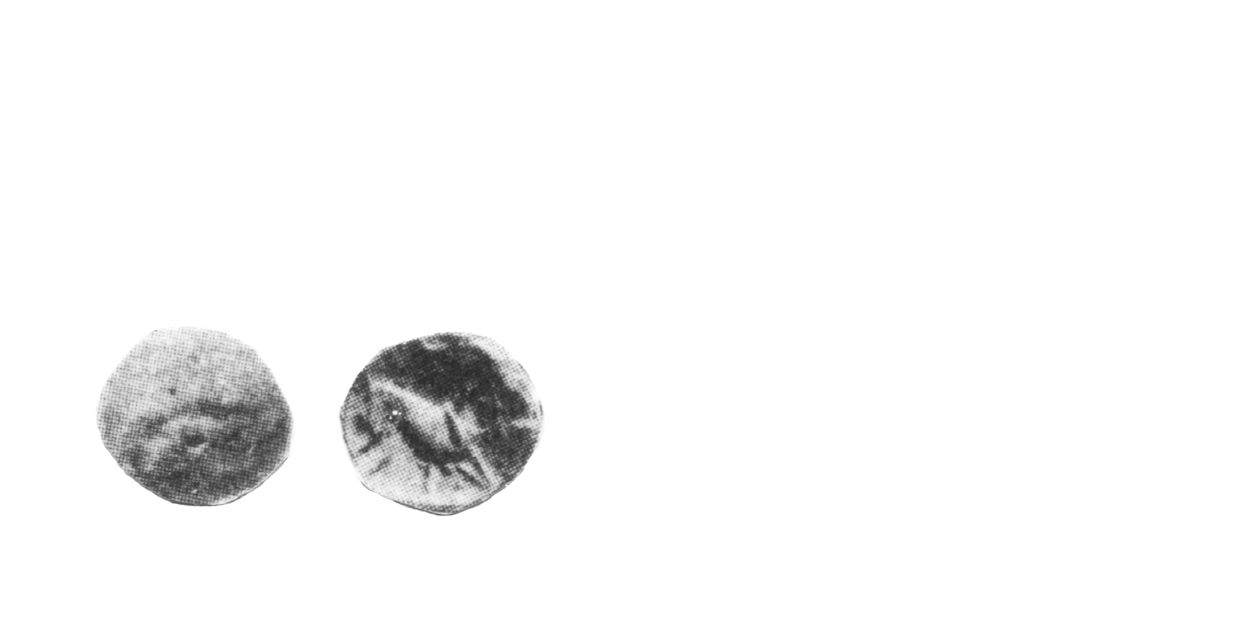
881 - 01 South Ferriby Type
ca. 45-10 B.C. Rare
Silver Fractional Unit ca. 0.2 gms. 1.0 mm
Earliest Record: Allen, 1963 (South Ferriby Hoard before 1908)
OBV: Almost plain
Identifying points:
1) vestiges of boar may be visible
REV: Celticized horse right
Identifying points:
1) horse more stylized than on Hosidius type
2) probably a large ring of pellets above horse, possibly with a large central pellet
3) upper portion of horse's front legs comprised of two lines
4) no object below horse
CLASSIFICATION: Corieltauvian D
NOTES:
- Obverse die used until almost completely obliterated
- Celtic Coin Index records now show this coin to be commoner than previously believed
- Fractional denomination, possibly of 877 - 01 or 877 - 07
see 877 - 01 and 877 - 07
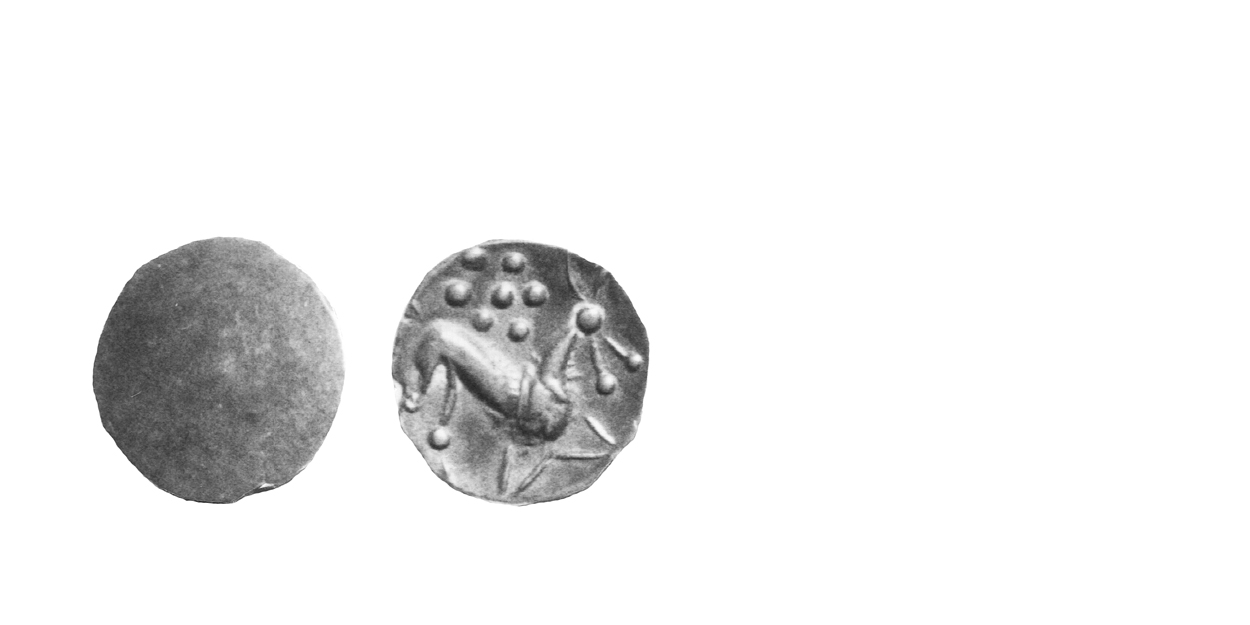
884 - 01 South Ferriby Type
ca. 45-10 B.C. Scarce
Silver Unit ca. 1.1 gms. 14 mm
Earliest Record: Roth, 1906
OBV: Plain
Identifying points:
1) no vestiges of boar visible
REV: Celticized horse right
Identifying points:
1) horse more stylized than on Hosidius type
2) daisy comprised of seven pellets above horse
3) upper portion of horse's front legs comprised of two lines
5) horse has "necklace" and "belt"
6) no object below horse
CLASSIFICATION: Corieltauvian D
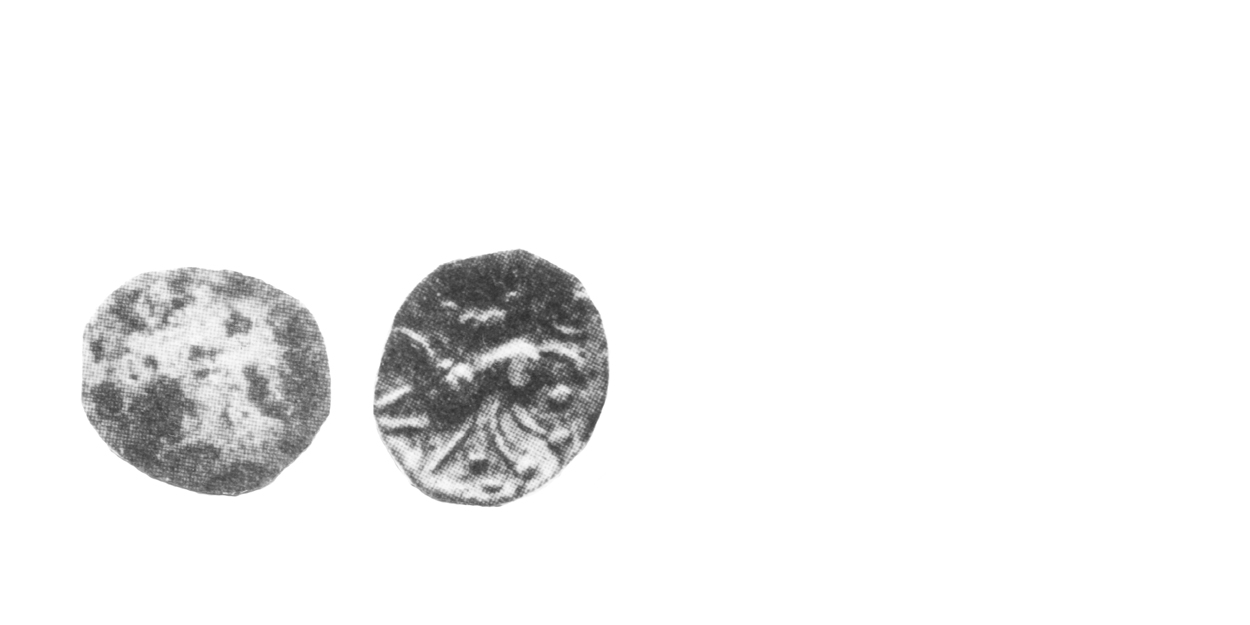
887 - 01 South Ferriby Type
ca. 45-10 B.C. Common
Silver Unit ca. 1.0 gm 14 mm
Earliest Record: Roth, 1912b (Peterborough Find, 1886)
OBV: Plain
Identifying points:
1) no vestiges of boar visible
REV: Celticized horse left
Identifying points:
1) horse more stylized than on Hosidius type
2) ring of pellets with large central pellet above horse
3) pellet below horse's tail
4) upper portion of horse's front legs comprised of two lines
5) horse has "necklace" and "belt"
6) two, possibly three pellets below horse
CLASSIFICATION: Corieltauvian D
NOTES:
- Pellet below horse's tail may be a privy mark denoting date or issue
- Celtic Coin Index records now indicate commoner than originally thought
888 – 01 Kite Type
45-10 B.C. Extremely Rare
Silver Unit ca. 1.0 gm. ca. 15 mm
Earliest Record: Leins, 2011a (Hallaton Hoard, 2001 - 2005)
OBV: Almost plain
REV: Celticized horse left
Identifying points:
1) horse more stylized than on Hosidius type
2) Kite with four pellets above horse
3) horse's front legs made up of a two lines each
CLASSIFICATION: Corieltauvian G
NOTES:
- Obverse die used until almost completely obliterated
- Not Illustrated
- Most are in museums
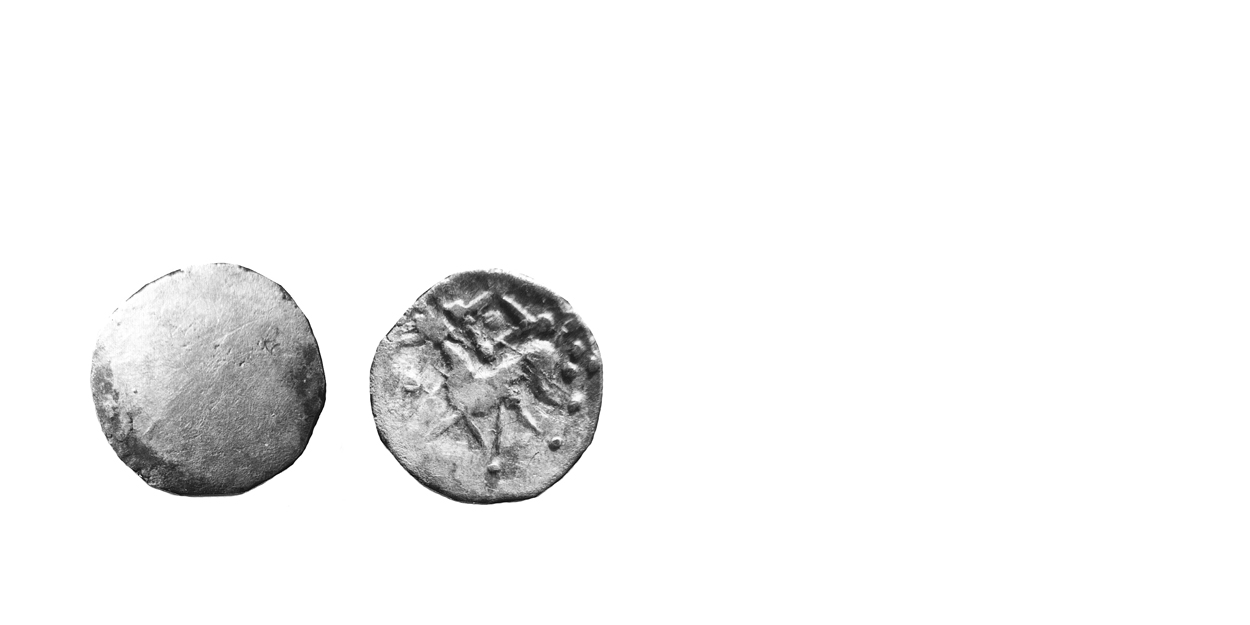
889 - 01 Kite Type
ca. 45-10 B.C. Extremely Rare
Silver Fractional Unit ca. 0.5 gms. 12 mm
Earliest Record: Van Arsdell, 1989
OBV: Almost plain
REV: Celticized horse left
Identifying points:
1) horse more stylized than on Hosidius type
2) Kite with one pellet above horse
3) upper portion of horse's front legs made up of a two lines
CLASSIFICATION: Corieltauvian G
NOTES:
- Obverse die used until almost completely obliterated
- Celtic Coin Index records now indicate rarer than originally thought
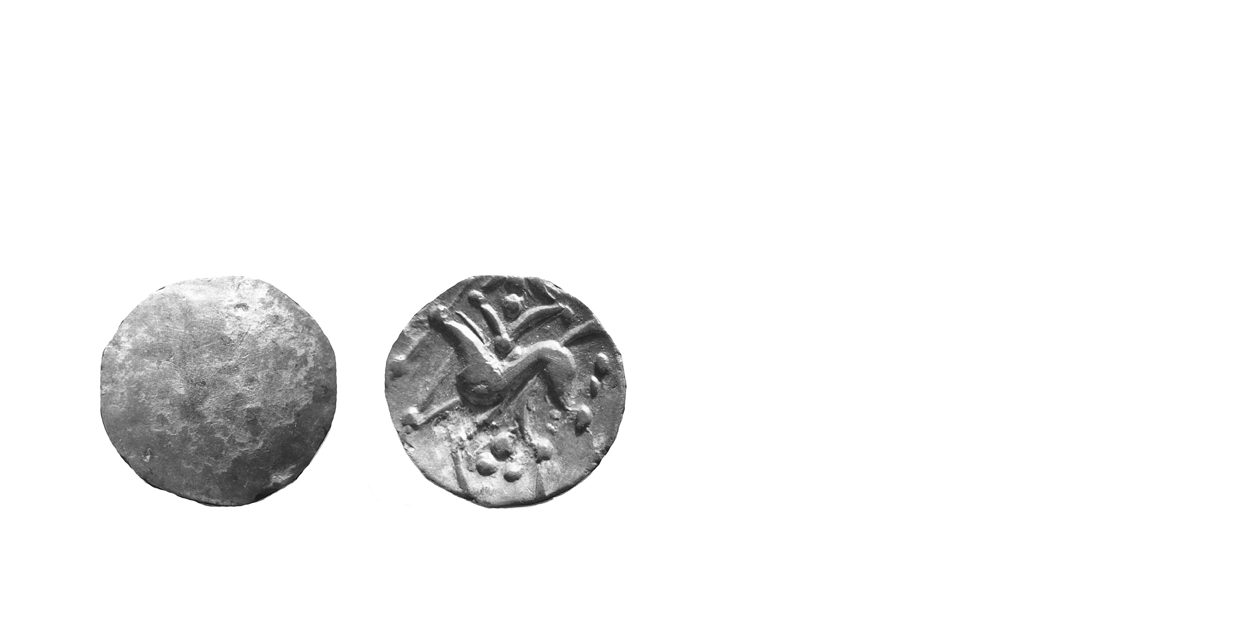
889 - 03 Kite Type
ca. 45-10 B.C. Extremely Rare
Silver Fractional Unit 12-13 mm
Earliest Record; Van Arsdell, 1989
OBV: Almost plain
REV: Celticized horse left
Identifying points:
1) as 889 - 01, but kite with two pellets above horse
CLASSIFICATION: Corieltauvian G
NOTES:
- Obverse die used until almost completely obliterated
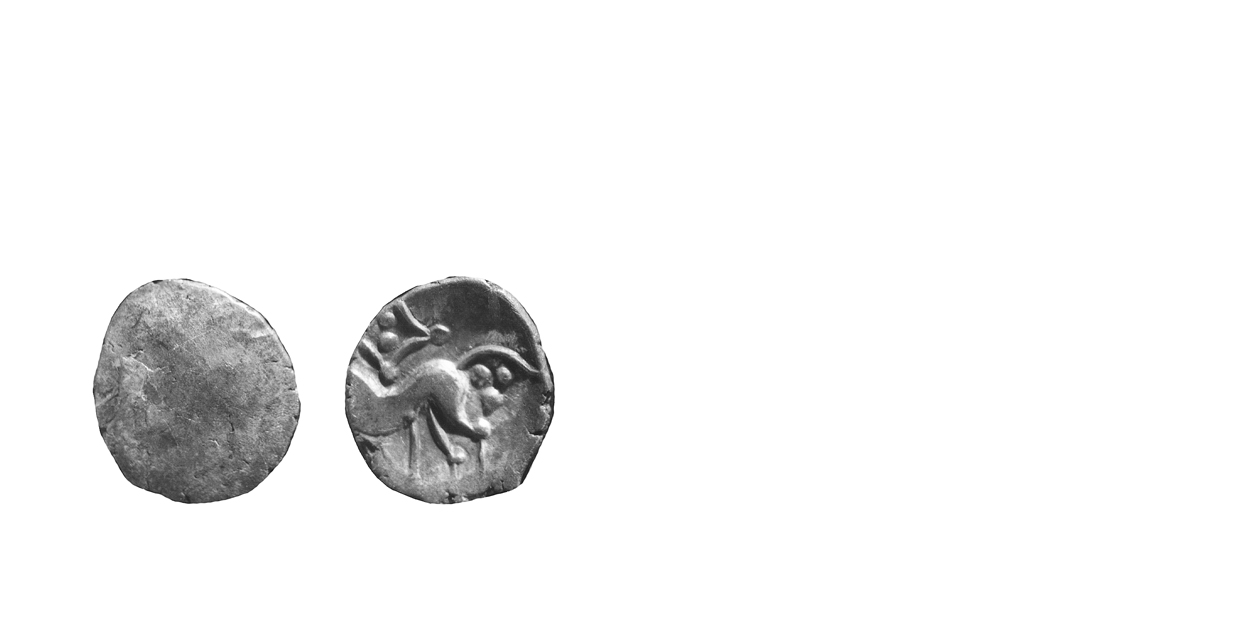
889 - 05 Kite Type
ca. 45-10 B.C. Extremely Rare
Silver Fractional Unit 12 mm
Earliest Record: Van Arsdell, 1989
OBV: Almost plain
REV: Celticized horse left
Identifying points:
1) as 889 - 01, but kite with three pellets above horse
CLASSIFICATION: Corieltauvian G
NOTES:
- Obverse die used until almost completely obliterated
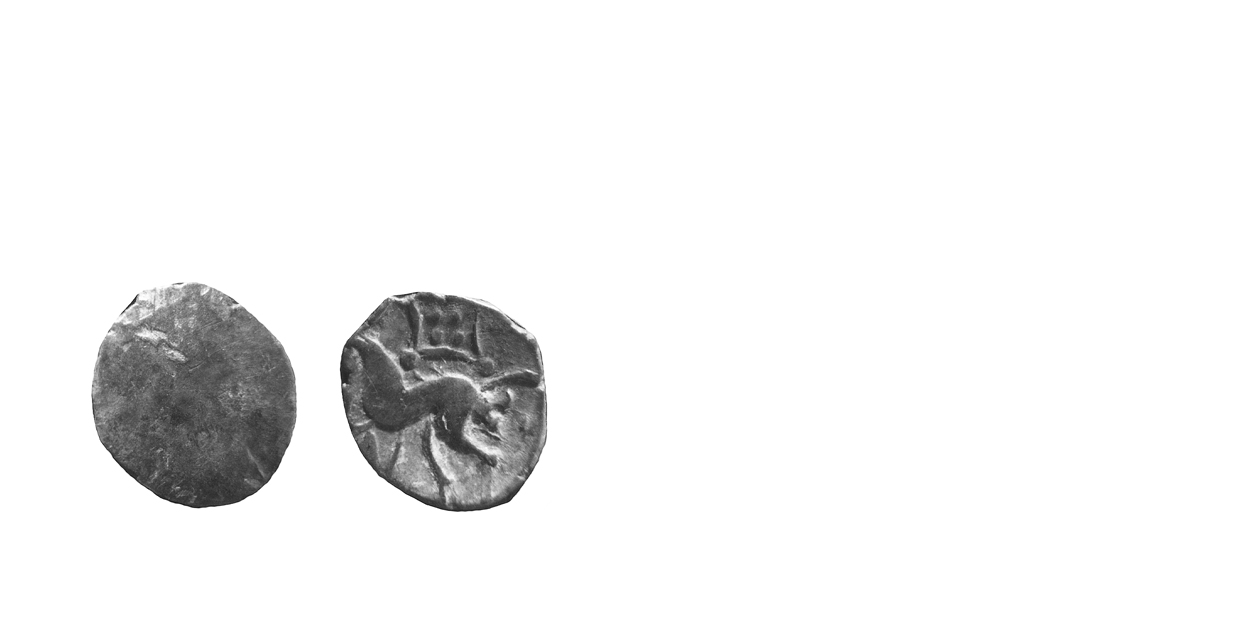
889 - 07 Kite Type
ca. 45-10 B.C. Extremely Rare
Silver Fractional Unit 12 mm
Earliest Record: Van Arsdell, 1989
OBV: Almost plain
REV: Celticized horse left
Identifying points:
1) as 889 - 01, but kite with four pellets above horse
CLASSIFICATION: Corieltauvian G
NOTES:
- Obverse die used until almost completely obliterated
892 – 01 Domino Type
ca. 45-10 B.C. Extremely Rare
Silver Unit 1.09 gms. 15 mm
Earliest Record: Hobbs, 1996 (unpublished 1988 find)
OBV: Almost Plain
REV: Disjointed horse right
Identifying points:
1) pellet below horse's mouth
2) domino-like box above horse
3) four pellets in box
4) horse's front legs made up of two lines each
CLASSIFICATION: Corieltauvian H
NOTES:
- Obverse die used until obliterated
- Most examples in museums
- Not illustrated
The Coinage of the Corieltauvi
The Corieltauvi occupied Lincolnshire, Leicestershire, Nottinghamshire, parts of Humberside and perhaps parts of Derbyshire and South Yorkshire. The correct name of the tribe, obtained from a tile-grafitto found in 1965, is CORIELTAUVI. In the past, the tribe had been known as the "Coritani", but the new spelling has been widely accepted. The Corieltauvi, for many years, were thought to be a largely peripheral tribe, untouched by the changes transforming southern Britain. This view has been questioned by archaeological studies made after 1960. They are now considered to have been an advanced group – early to adopt the potter's wheel, for example.
Recent studies indicate the coinage was one of the earliest struck in Britain, appearing shortly after the Atrebatic/Regnan/Belgic Westerham stater. The Corieltauvi struck coins continuously until the Claudian invasion or later. The coinage has a complex system of privy marks that may have been used for die control, weight specification or perhaps identification of metallurgical content.
The coinage was at one time thought to have a Brigantian origin because several large hoards were found in the territory of that tribe. However, more comprehensive analyses of findspots identify a primarily Corieltauvian source. Recently, assertions have been made that northerly finds of late types are Brigantian, but this is a case of over-interpretation of insufficient information. Given the fluid conditions after the Claudian Invasion, the location of the Corieltauvian mint may have shifted north. Similarly, the final resting places of the latest coins would naturally tend to be in the north. The possibility that the Brigantes struck some of the later types remains. But too little information exists at this time to prove a separate Brigantian coinage.
The coinage begins around 55 B.C. with the NORTH EAST COAST TYPE, derived stylistically from the Abstract Design Type staters of the Ambiani. These coins, struck to a standard weight of 6.25 grammes, appeared in two versions. The horse on the reverse faces either right or left, and previously it was felt the change signaled a difference in the weight of the two types. However, more recent weight studies show the difference is smaller than thought. In the current catalogue, the two are listed as a single issue. The NORTH EAST COAST TYPE was replaced about 45 B.C. by the SOUTH FERRIBY TYPE, signaling a significant weight reduction to 5.7 grammes.
The South Ferriby Type and its variations display the most complex series of privy marks found on any Ancient British coinage. Cleverly-made plated forgeries are known for most types. The forgeries were produced by hammering gold foil around a bronze core prior to striking, and some of the forgeries appear to be struck from official dies. The similarity between genuine and false coins, however, may only indicate the extent of technological knowledge amongst the tribal population – the forgers may have been as expert as the mint-workers in die-cutting. The proficiency of the forgers may help explain the need for complex privy marks on the genuine coins. Alternatively, future metallurgical studies may prove the marks signal changes in the gold/silver/copper relationship instead and thus serve as assay marks.
A long series of inscribed coins followed the uninscribed, and the coinage ended with the Roman suppression of tribal coinage during the fifties A.D.
Evidence of a Celtic mint has been discovered at Old Sleaford. However it is not known if it was the only Corieltauvian mint, nor if it was the mint producing all the coins listed in this catalogue.
